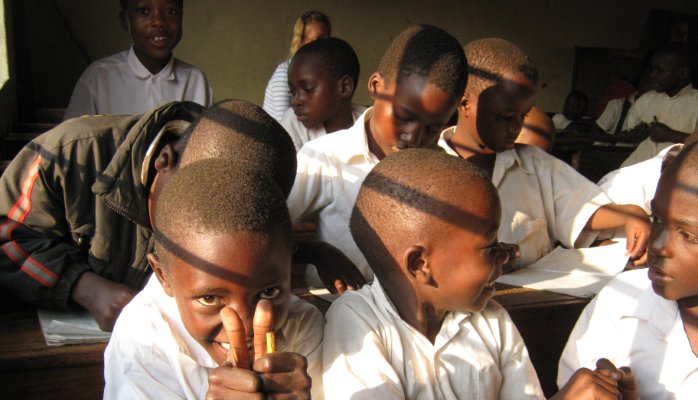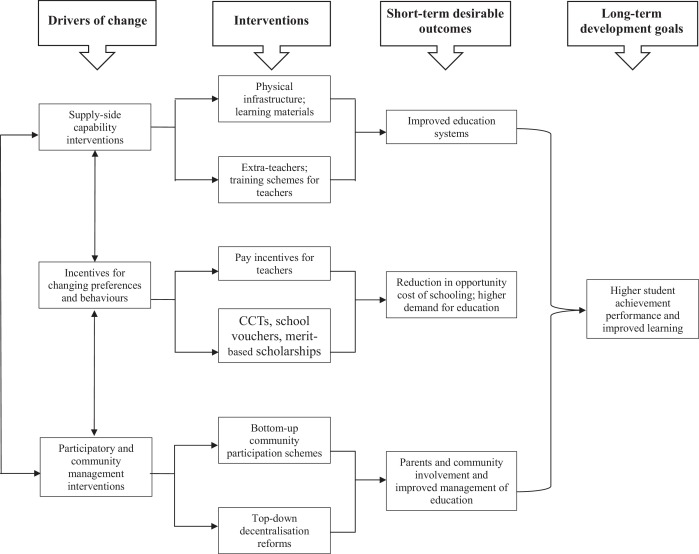Blog
Three types of interventions that can improve the quality of education in developing countries
In a recent article in the International Journal of Educational Development we present the results of a systematic review conducted to identify policy interventions that improve education quality and student learning in developing countries.

What works to improve the quality of student learning in developing countries?
The study highlights three main drivers of change of education quality:
-
Supply-side interventions
These aim to raise student achievements by targeting infrastructure or organizational deficiencies through, for example, improving physical infrastructure, providing teaching materials, and training and hiring extra teachers.
Financial resources provided by governments and/or aid-funded programmes can take the form of directed or generalized financial allocations to improve physical conditions of existing schools, or involve the construction of new schools. Teaching materials can include computers, flip-charts, and textbooks. Hiring extra teachers aims to decrease the prevailing high teacher–pupil ratios in many developing countries, and also complement permanent teachers with younger, often more motivated, temporary teachers.
-
Behavioural interventions
These interventions use incentives to influence behaviour and intertemporal preferences of teachers, households, and students. Incentives for teachers seek to improve the quality of teaching, whereas incentives for students and parents are concerned more with behaviours and preferences that affect the demand for and utilization of education services.
- Participatory and community management interventions
These are usually implemented through decentralization reforms, knowledge diffusion, and increased community participation in the management of education systems.

Overall, the main conclusion is that interventions are more effective at improving student performance and learning when social norms and intertemporal choices are factored in the design of education policies, and when two or more drivers of change are combined. Thus, supply-side interventions alone are less effective than when complemented by community participation or incentives that shift preferences and behaviours.
Miguel Niño-Zarazúa is a Research Fellow at UNU-WIDER.
Serena Masino is a Research Officer on the MNEmerge Project at the Oxford Departmant of International Development
 Join the network
Join the network
